Working with wood can be challenging when space is a constraint. We would all love to have a 2-4 car garage/ workshop space that could be dedicated to our craft. However, the reality for many, especially those in an urban or suburban environment, is that space is limited and often has competing priorities. Even for those of us lucky enough to have a dedicated space to work in, we often find that once the essential machines and workbenches are in place, there’s a lack of floor space for full-size/floor-mounted machines specialising in one task.
This is where benchtop machinery really comes into its own. Having machinery small enough to pack under a bench or on a storage shelf so the car can be parked back in the garage or the balcony can revert to a space for entertainment can be the difference between being able to make at home or not.
Carbatec has always recognised this need for powerful yet space-saving machinery, having produced and invented one of the world’s first dedicated pen-turning mini lathes back in the early 90s. Carbatec now offers a new, complete range of benchtop machinery that will let you accomplish any task. The process of turning plain old wood into functional pieces remains the same regardless of the machinery used. A complete workshop would usually include machinery or tools for:
- Stock preparation and dimensioning
- Stock sizing and shaping
- Joinery and assembly
- Finishing
1 - Stock preparation and dimensioning with benchtop machinery:
JOINTERS
Two benchtop jointers are offered by Carbatec. The JN-BX150P and JN-BX200P both offer segmented style head for improved cut finish on difficult timbers and simple blade replacement when they are worn out. The latter also features integrated bed extensions, which provide more truing ability across longer boards. Both jointers can also be upgraded with Tungsten carbide blades.
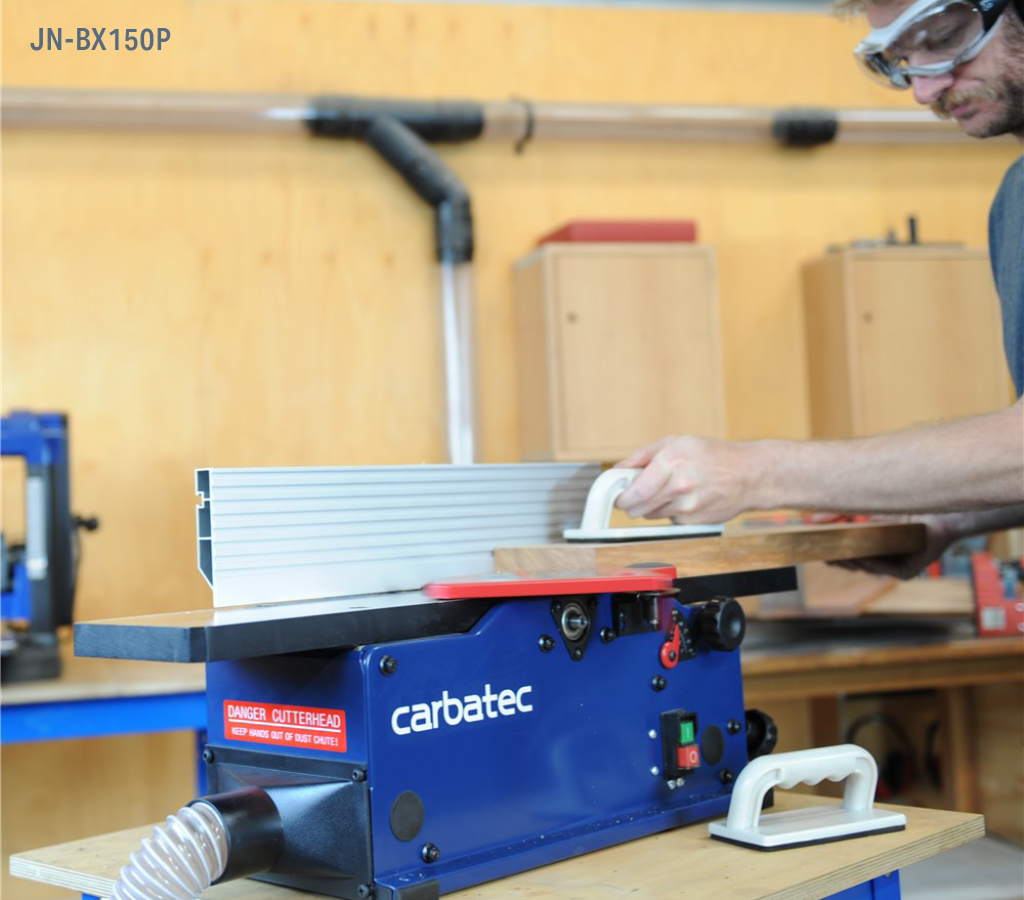
JN-BX150P Carbatec 150mm Spiral Head Benchtop Jointer
PLANERS-THICKNESSERS
Carbatec offers two benchtop or “lunch box” style planer-thicknessers.
The TH-B317P features straight blades that are easy to replace and can be offset, thanks to the slotted mounting system employed in the design, meaning you can work around at least one accidental nick in the blade.
The TH-BX330P features a segmented head for an improved cut finish on difficult timbers, simplified blade maintenance, and the ability to upgrade to a Tungsten Carbide Blade for improved edge life.
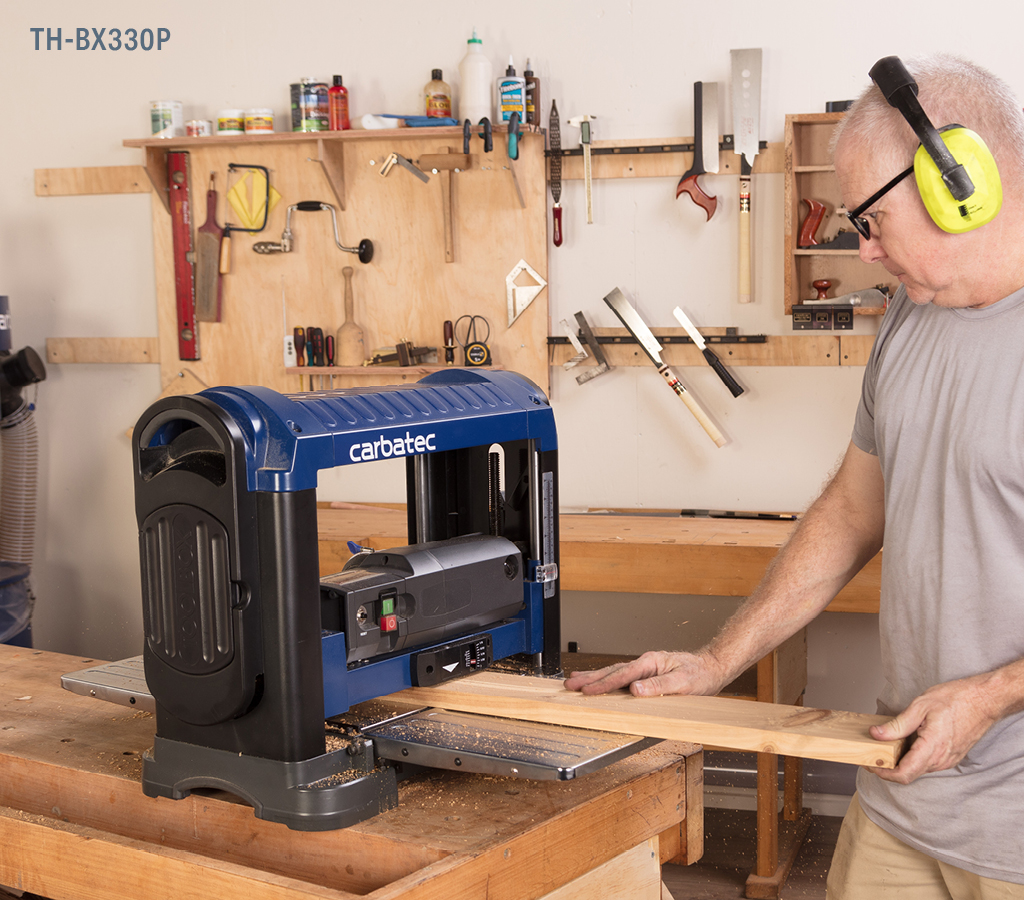
TH-BX330P Carbatec 13" Spiral Head Benchtop Thicknesser
TABLE SAWS
Table saws are well suited to all straight ripping and crosscutting tasks and, with the right blade and set-up, can easily make cuts that will require little to no further edge preparation for joinery or laminating tasks. They are also well suited to cutting tenons, half-lap joints, grooves, dados (with or without a dado blade), and box joints.
Carbatec is proud to carry SawStop, the world’s safest Table Saws. Their latest saw, the CTS10, packs in all the safety features of its bigger siblings and only lacks minor features associated with saws having larger motors, i.e. dado stacks, a capability that can easily be worked around.
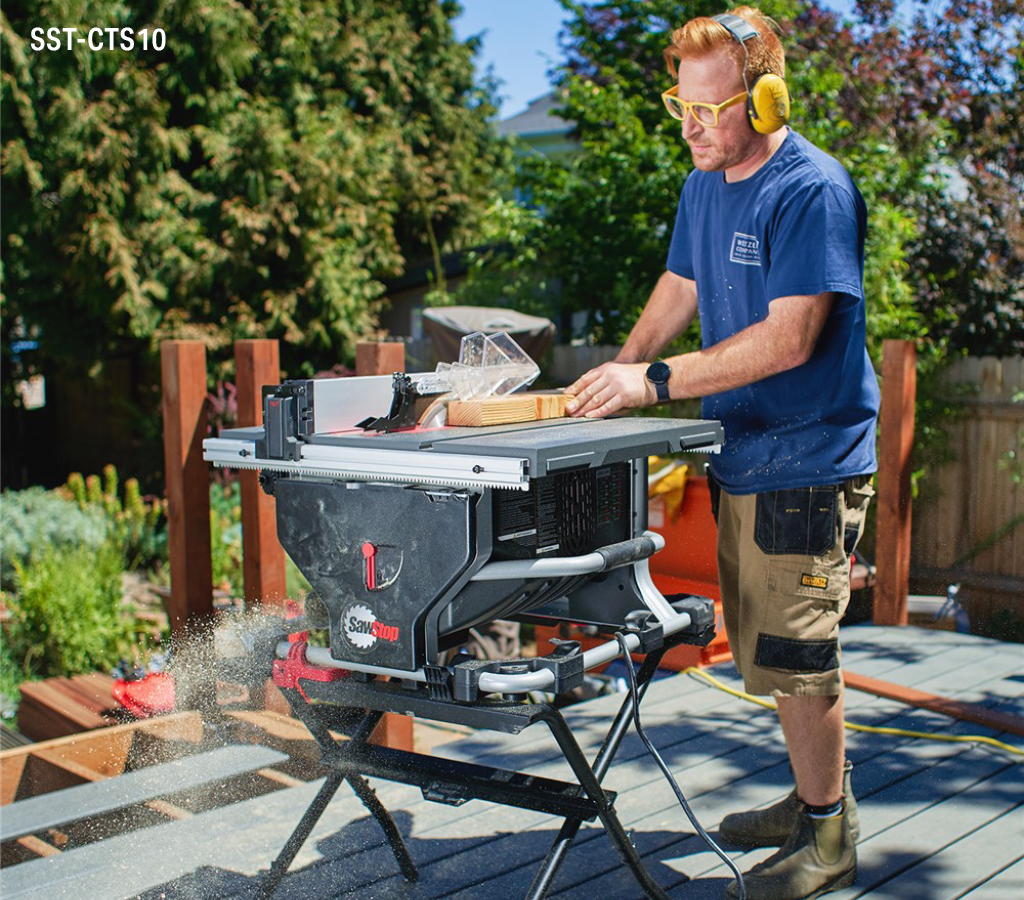
SST-CTS10 SawStop Compact Table Saw CTS 10"
BANDSAWS
Bandsaws are well suited to ripping and crosscutting, especially if the part is going to have a curve to it. They also excel at resawing timber, generally having more height capacity than a table saw but also a significantly finer kerf, meaning less waste.
The Carbatec BS-B200H brings a new level of capability to the benchtop bandsaw market. With its all-metal construction, the BS200H is a serious machine in a compact size. Perfect for a box or model maker.
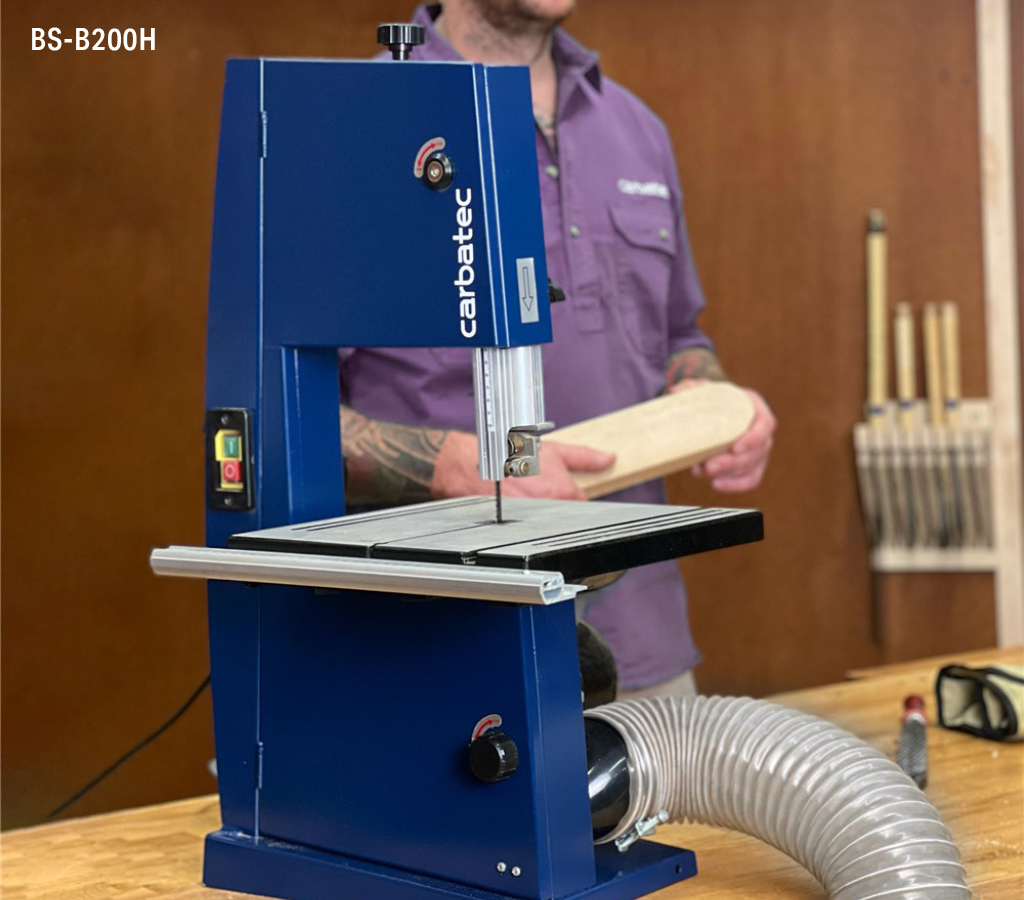
BS-B200H Carbatec 8" Benchtop Model Bandsaw
Table saws and bandsaws are very versatile and are used for stock preparation and dimensioning, as well as for most stock sizing, shaping, and even joinery.
2 - Stock sizing and shaping with benchtop machinery:
SCROLL SAWS
Scroll saws excel at cutting complex shapes and patterns (for fretwork, marquetry, or parquetry) in timber or non-ferrous metals. It's the machine of choice for many woodworkers mastering the art of dovetail joinery.
Carbatec carries a full range scroll saws, from the beginner and budget-friendly SS-400H to the professional-level SS-400C and SS-530C.
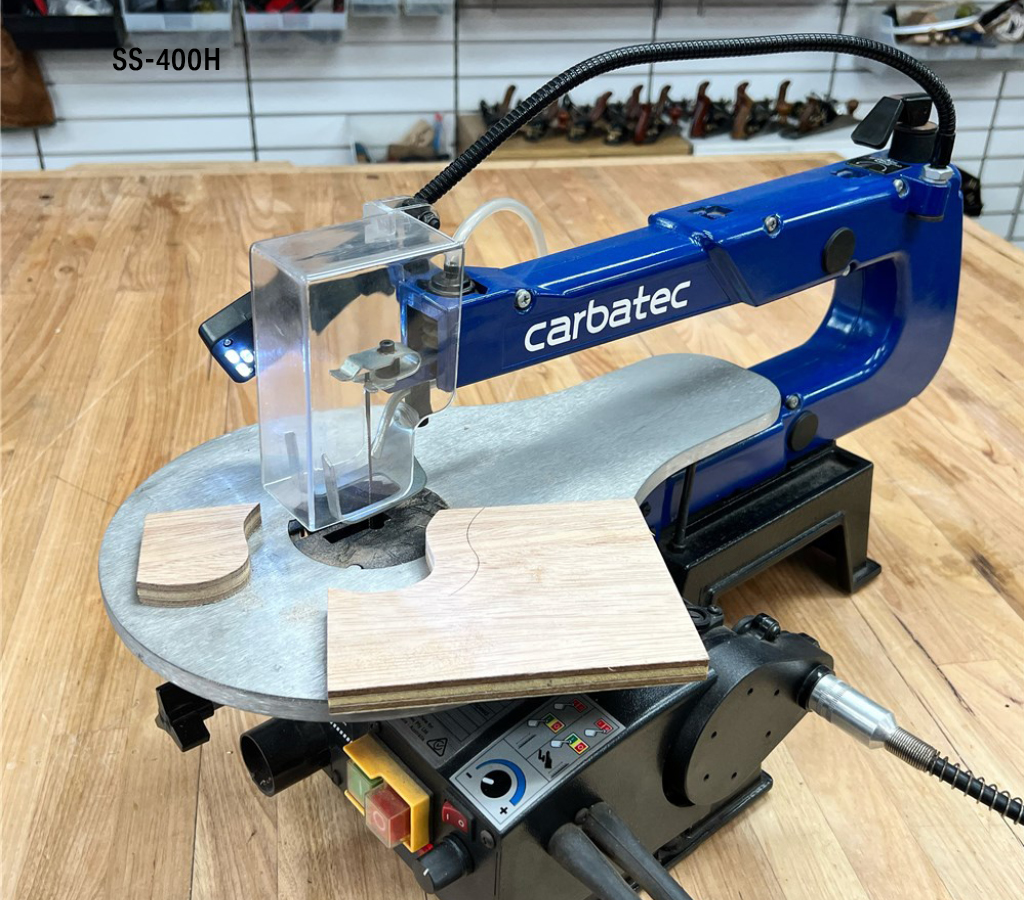
SS-400H Carbatec 400mm Variable Speed Scroll Saw with Rotary Tool
3 - Woodturning with benchtop machinery:
LATHES
Turning is an area of woodworking that can be its own all-encompassing craft, with many woodworkers describing themselves as turners. However, it can also offer a way for someone who is more of a “flat worker” (a term turners use for those who don’t work exclusively “in the round”) to take their projects to the next level. You could make custom handles or draw pulls for a chest of draws or turn a small bowl or dish from scraps of timber left over from another project. In this way the portability and storability of a benchtop or mini lathe make them an excellent choice for turners and “flat workers” alike.
Carbatec offers a full range of benchtop lathes, from the beginner and budget-friendly WL-B440H to the intermediate WL-B1220H and TK-COMET-DR and professional level machines WL-B1420P, LGT-REVO-1216 and TK-NEPTUNE.
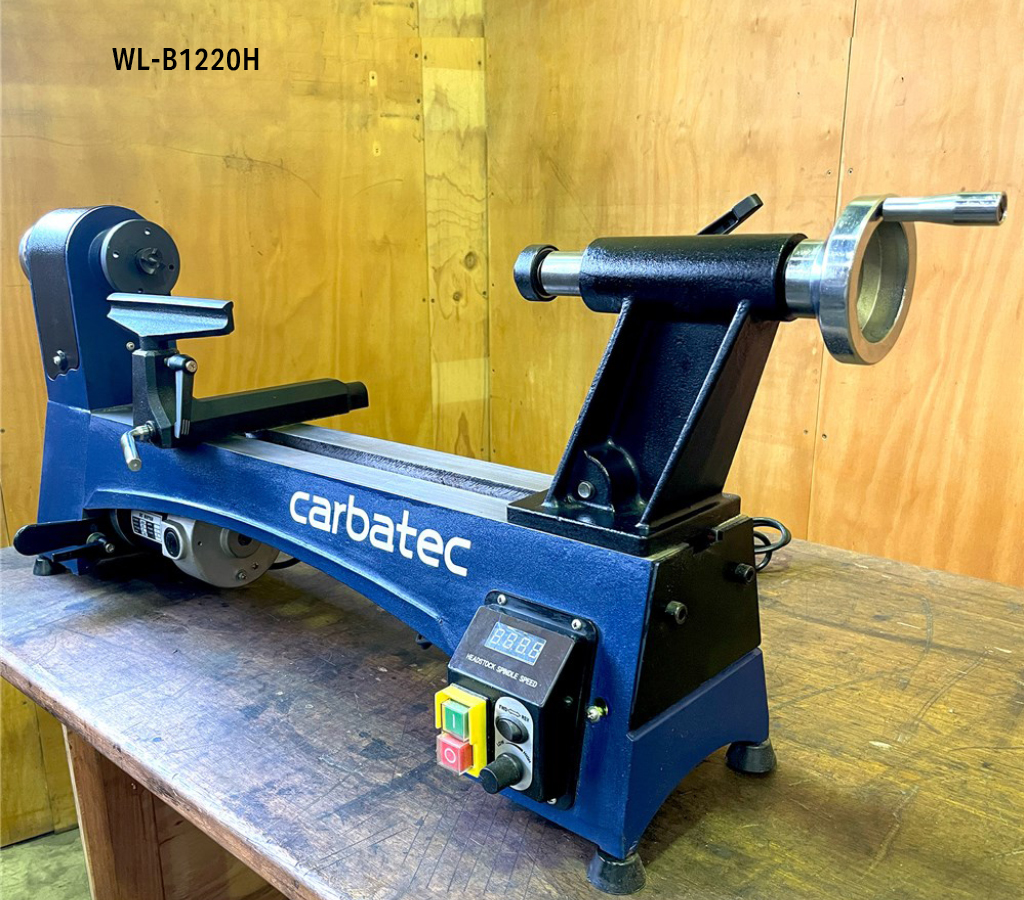
WL-B1220H Carbatec Electronic Variable Speed Benchtop Mini Lathe
4 - Joinery and assembly with benchtop machinery:
Being able to make precise holes to a set depth and angle repeatedly is a critical task for any joinery operation. Other tasks may include bulk wood removal, such as using Forstner bits to remove the bulk of the waste from a mortise before cleaning up the corners and edges with a chisel.
DRILL PRESSES
Carbatec offers the DP-B550P, a professional-level benchtop drill press and the advanced TK-VIKING, which features digital depth stop, thread tapping modes and more.
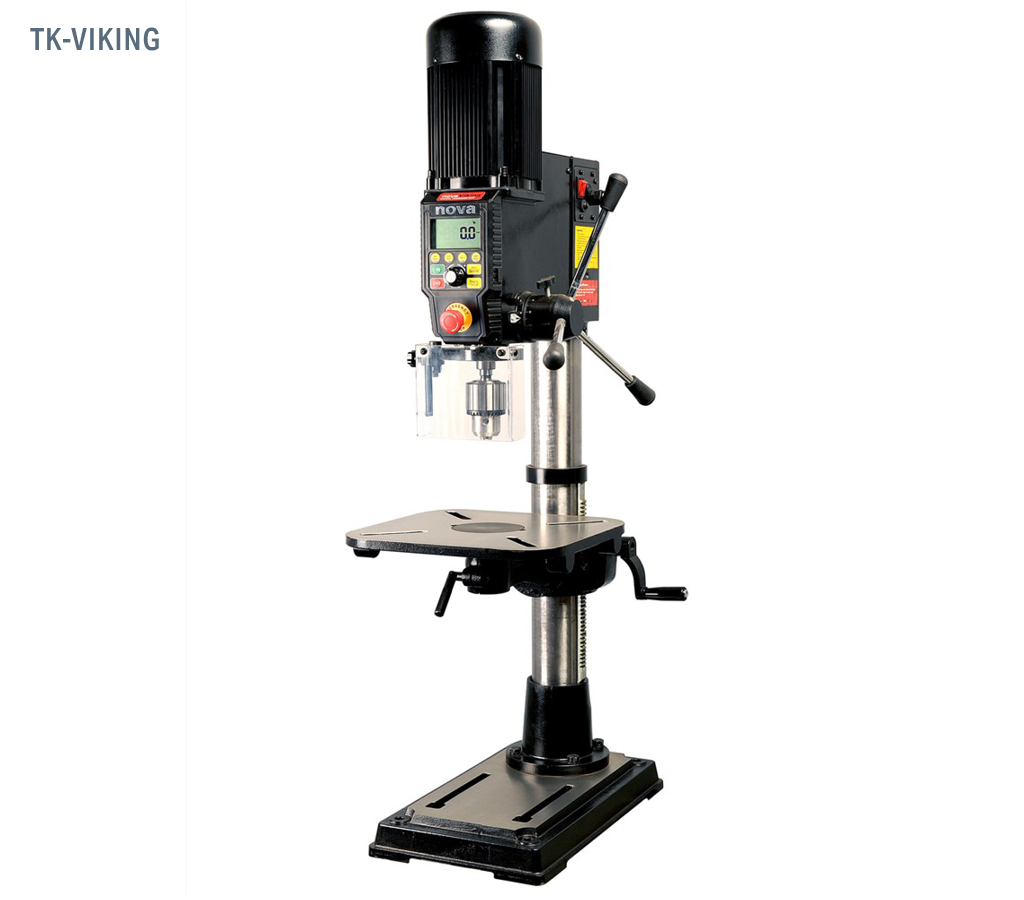
TK-VIKING Nova Viking 16" DVR Drill Press
MORTISERS
It is relatively easy for most woodworkers to create a tenon, but making an accurate mortise can be significantly more challenging and time-consuming. The Carbatec MM-B375P makes cutting precise mortises much easier and quieter than hand chopping or using a router (important for those of us working at home after hours.)
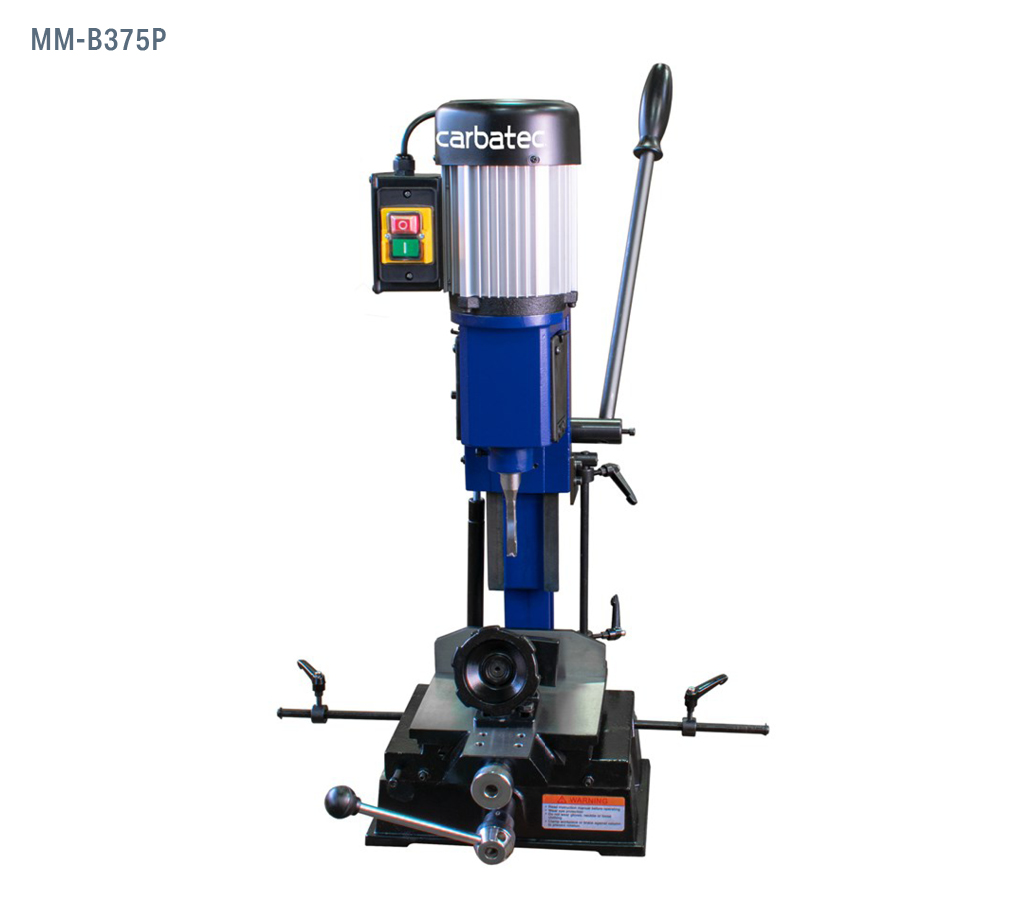
MM-B375P Carbatec Benchtop Chisel Mortiser
5 - Finishing with benchtop machinery:
SANDERS
Sanding is a crucial step that will take your project from "This was DIYed" to "What a beautiful masterpiece!" Refining the surface, removing imperfections and achieving a smooth, polished finish is when the magic happens, and the beauty of the grain is revealed. With a benchtop sander, you will achieve these results in a fraction of the time required by manual sanding. A sander will ensure a flawless, uniform surface and provide a professional finish.
Carbatec offers compact sanding options, from benchtop disc sanders like the DS-B300H to 400mm wide drum sanders like the WDS-4080P.
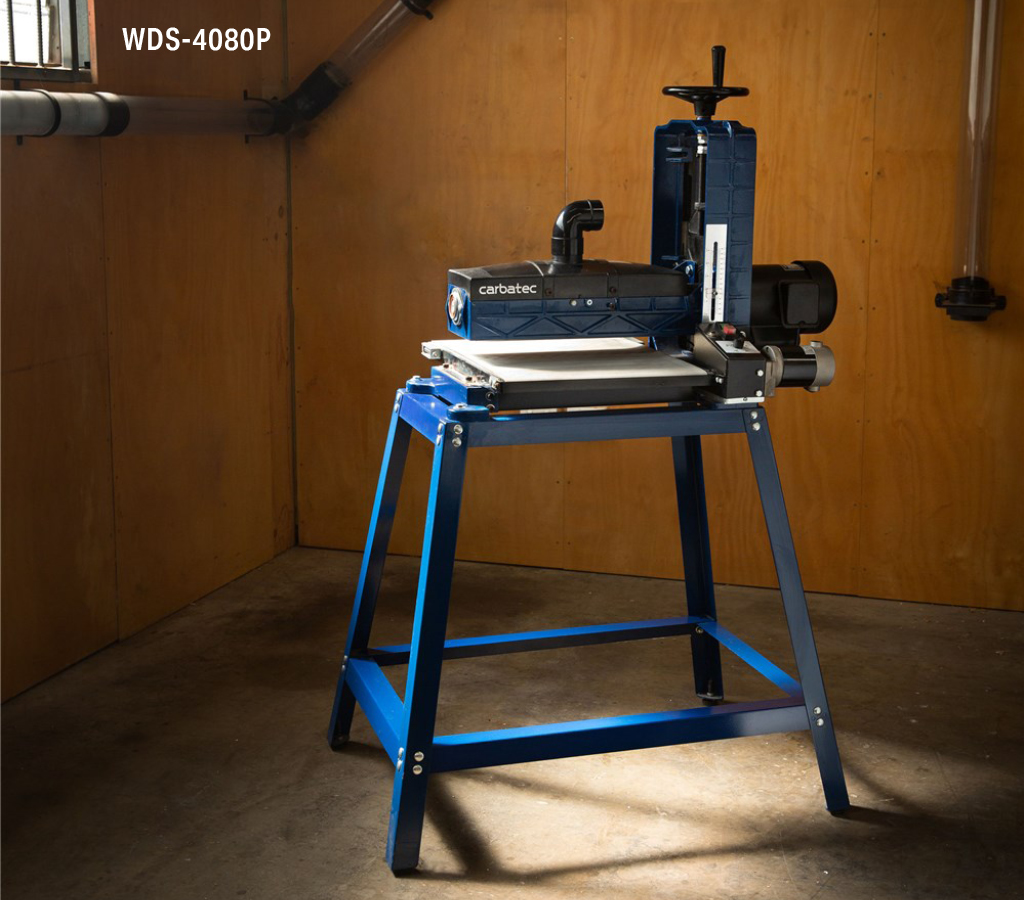
WDS-4080P Carbatec 400mm/800mm Wide Drum Sander
EDGE BANDERS
If you are working with manmade products and panels, the Carbatec EB-B2000P will enable you to easily install edge banding up to 1.5mm thick and 56mm wide. The unit comes with a handheld edge trimmer. It is a significant improvement in balancing that second-hand clothing iron on the narrow edge of a board while struggling to keep the edging aligned and not burn one’s fingers.
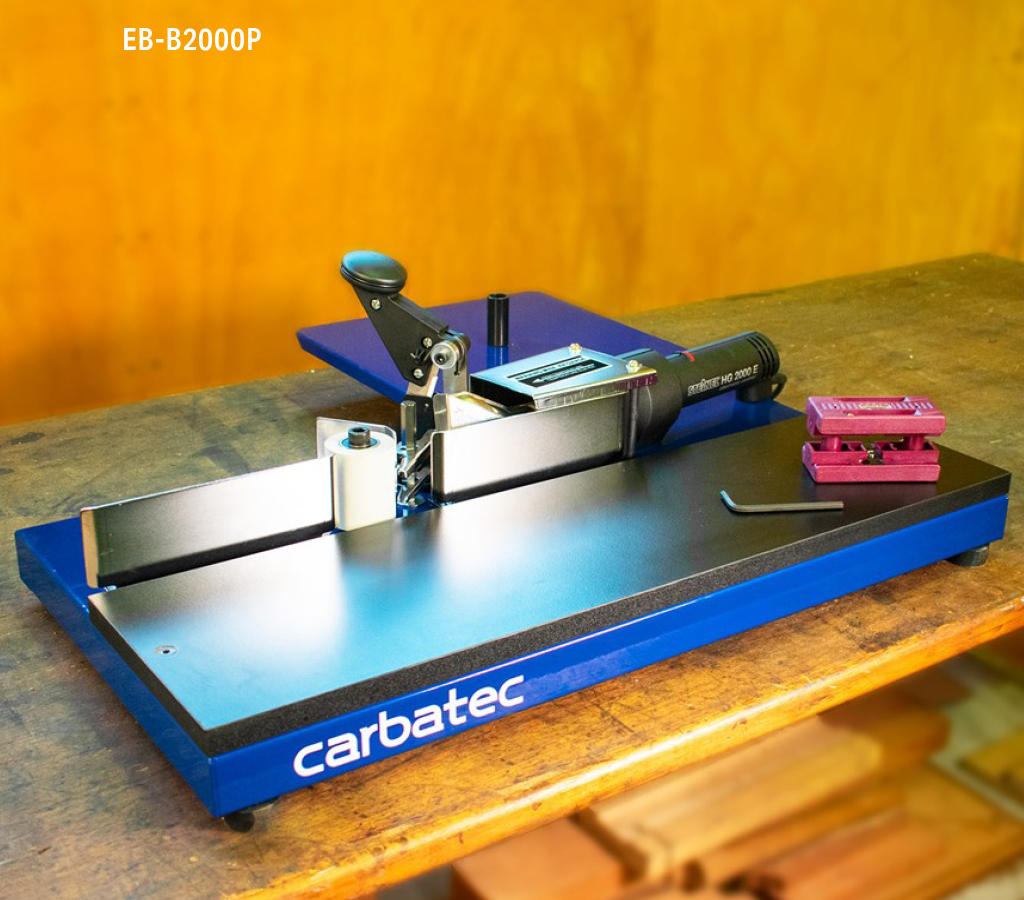
EB-B2000P Carbatec Benchtop EdgeBander
|